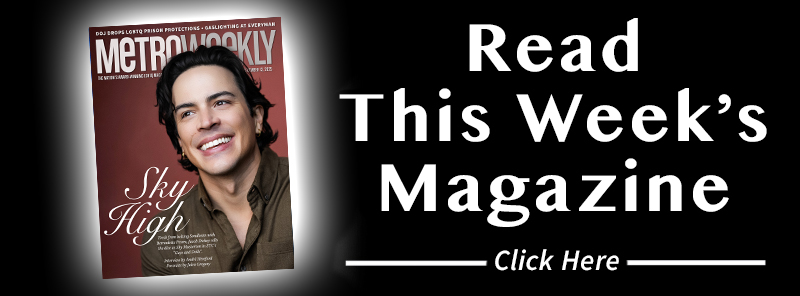‘Romeo and Juliet’ Opera Review: Love and Death
The Washington National Opera's 'Romeo and Juliet' is the epitome of impending doom delivered with entertainment and style.

Adding its voice — literally — to the District’s Shakespeare Everywhere festival, the Washington National Opera charms with a delightful rendering of Charles Gounod’s Romeo and Juliet.
The co-production with the Glimmerglass Festival is filled with cavorting Capulet partiers as fun as Madonna’s Celebration Tour dancers and an energized cast with fabulous voices. It is impending doom delivered with entertainment and style.
In his debut as an opera director, Simon Godwin — normally seen leading the Shakespeare Theatre Company — brings a naturalness to the performances, which feel almost as if the singers are playing themselves.
It’s a warmth that infuses the story, keeping it present and alive. We may already know the gist of every scene, but we have the fresh discovery of how this Juliet and this Romeo live it. It’s a perfect complement to Gounod’s melodic, dramatic, deep-beating score of love, anger, regret, and loss.
If Godwin likes to keep it human, he also enthusiastically embraces opera’s scope for spectacle, using the first act party scene to fill the space with a kaleidoscope of color and activity. You may not be led visually through the antics as is typical for such scenes, but there is something fun to look at wherever the eye lands and, importantly, Godwin knows when to dial it down and let the story resume.
Another confident move is the way in which the production plays with the way operas suggest time. Although the action is set in Verona, it soon emerges that the era is more or less now. Yet there is something in the mood that nods to the way operas often evoke the antique past, a sense of elegant ancient worlds that need never have existed.
This is suggested in Blake Manns’ attractively gloomy medieval projections, the clouds racing across a night sky, the richly striking jewel tones of Loren Shaw’s costuming, and Daniel Soule’s austere, cleverly moveable sets. The choices are beautifully balanced and are often nothing short of gorgeous.
Of course, Romeo and Juliet will always be about the two leads, and soprano Rosa Feola and tenor Adam Smith are a largely convincing pair of lovers. Notably, they present as older than the passionate teenagers of the play and less cocooned in their bubble of innocent devotion.
The bearded and be-suited Smith, in particular, looks more Millennial than Gen Z. The approach lends a certain gravitas to their choices and maturity to their bond, but it does dilute some of the pathos of the play. This is not the heartbreak of watching young teens desperately ending their lives while the adults feud.

If there is anything that further dampens the connection between these two, it’s some of the choreography. Finally alone in Juliet’s bedchamber, the couple are reluctant to accept that, now banished, Romeo must flee at dawn. There is an awkwardness to the libretto as they go back and forth over whether they hear the morning song of the lark.
Matters are not helped by some scampering that leaves Romeo standing before a kneeling Juliet in a way that — at least from some angles — looks, shall we say, comically amorous.
This awkwardness returns again in their final scene in the crypt. In Gounod’s version, Juliet revives just after Romeo drinks his poison, giving them time for a final, beautifully sung, duet. But as Romeo sings while succumbing to the deadly draught, he slowly and awkwardly arranges himself beside Juliet’s slab. The maneuverings are distracting to the point that one is less listening to his despair and more wondering if he is going to end up rolling down the steps.
These moments aside, Feola is believable as a joyful woman with enough confidence to delight in singing the “Je veux vivre” waltz in a magnificent pair of wings. Later, crucially, she reveals the depths of her feelings with some sonically spectacular renderings of Gounod’s most heartfelt arias, bringing her emotional evolution into focus.

Romeo and Juliet is, in many ways, a tenor’s showcase, and after a slightly slow start, Smith proves an exciting and confident tenor, bringing some stellar high notes, with much control and expression.
Supporting the strong leads is an exceptional cast, especially in the anchoring roles. Baritone Justin Austin is a memorable Mercutio, singing with power and bringing a convincing conviction to his hatred of the Capulets. As Tybalt, tenor Duke Kim is appropriately aggressive and sings with pleasing clarity and precision.
In the trouser role of local ruffian Stephano, mezzo-soprano Winona Martin avoids the usual swaggering pitfalls, making the novelty of the role all the more fun to watch. Her aria “Que-fais tu, blanche tourterelle?” reveals a charming tone and dexterity.
As Juliet’s long-suffering nurse Gertrude, mezzo-soprano Jill Grove brings some nicely understated comedy and sings her small role with a commanding richness. A particular treat is bass Nicholas Teste’s Frere Laurent, the priest who secretly marries the couple. Teste sings with a captivating smoothness and depth that gives the entire drama pause: this marriage is no small thing.
Tying it all up in a bow, the WNO brings the score vividly to life under the energetic baton of conductor Evan Rogister.
For those hankering for a strong dose of classical opera done well, Romeo and Juliet is your autumnal treat. For anyone who loves Shakespeare, consider this a charmingly engraved invitation to see how opera can tell the story.
Romeo and Juliet (★★★★☆) plays Nov. 10, 12, 15, 17 and 18 in the Kennedy Center Opera House. Tickets range from $45 to $269. Visit www.kennedy-center.org/wno.
Support Metro Weekly’s Journalism
These are challenging times for news organizations. And yet it’s crucial we stay active and provide vital resources and information to both our local readers and the world. So won’t you please take a moment and consider supporting Metro Weekly with a membership? For as little as $5 a month, you can help ensure Metro Weekly magazine and MetroWeekly.com remain free, viable resources as we provide the best, most diverse, culturally-resonant LGBTQ coverage in both the D.C. region and around the world. Memberships come with exclusive perks and discounts, your own personal digital delivery of each week’s magazine (and an archive), access to our Member's Lounge when it launches this fall, and exclusive members-only items like Metro Weekly Membership Mugs and Tote Bags! Check out all our membership levels here and please join us today!



























You must be logged in to post a comment.